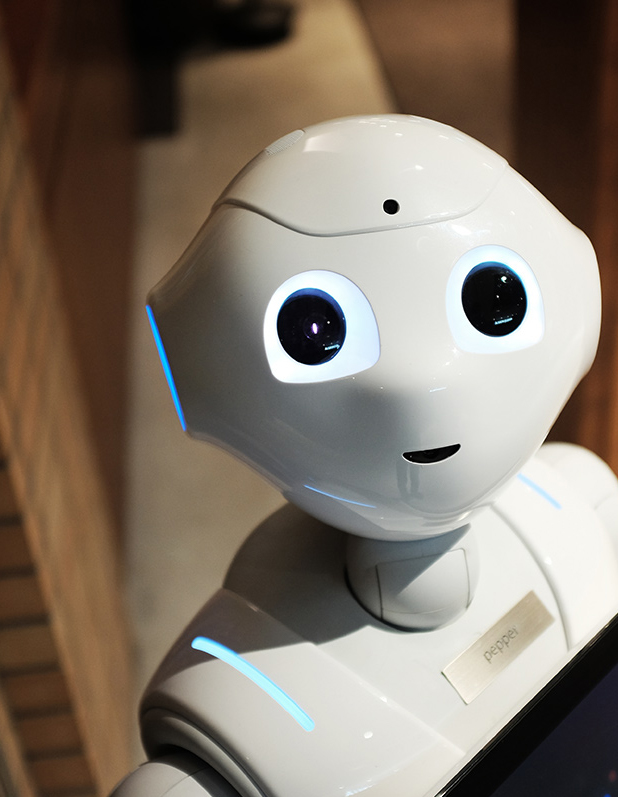
April 11, 2017
Being human.
Visions of a dystopian society are nothing new – in novels (from renaissance times through to modern) and films over the last 60 years we have enjoyed succumbing to the temptation of imagining our world where societal rules as we understand them are upended or menacingly transformed; from Swift’s Gullivers Travels, HG Wells’ The Time Machine, Orwell’s 1984 to a whole raft of modern takes on dystopia (The Hunger Games, Divergent, Planet of the Apes, Mad Max, A Clockwork Orange, Brave New World, Blade Runner and so on) – all take pot shots at human frailties, and importantly human strengths, individually and collectively.
Much has been written and said about the rapid development of Artificial Intelligence technologies and the impact that this will have on our daily lives. It seems popular to predict a dystopian future where dysfunctional robots prevail with humans living a weaker, fearful and subservient existence as portrayed in a proliferation of films and novels such The Hitchhikers Guide, 2001: A Space Odyssey, Star Wars, The Terminator, I,Robot, A.I, to name but a few.
Put simply, these films sensationally play upon our fear of machines ‘taking over’.
It’s interesting that rapid advances in A.I. beg us to define what AI means, and indeed what being human means. For example, in the ‘real-world’ we see an accelerating rate of development and usage of A.I. in an increasing breadth of fields – some highly visible – others less so. Aside from the obvious usages such as automated manufacturing lines in the automotive and food/beverage sectors and autopilots on commercial airlines (now flying 80% of our worldwide flight time) we see A.I. coming into the service sector (web development, graphic design) and also professional services such as medicine, financial services and the law.
Much has been written about the increasing adoption of A.I. in ‘knowledge-based’ environments where processing power and ever more complex algorithms can enable machines to make ‘judgments’ on matters which previously had been thought to be the domain of human thought. In the investment world, we’re beginning to see the roles of Financial Advisers and Fund Managers becoming automated with machines now generating more consistent returns on the investment markets than their human counterparts. If we look at the Legal sector, for example, the ‘predictive model of case outcomes’ is being used right now by progressive law firms to project outcomes in Personal Injury caseloads, as a tool to assess whether to take a case on or not.
It is being predicted by some that, in the Legal Sector, the entire Associate band of practitioners (in some areas of the law) may become redundant as predictive analytics technology replaces solicitors on ‘knowledge-based’ matters. What could this mean? A professional services sector populated only by Partners who win and feed work into the robots, and Trainees learning to become business winners. No associates, no secretaries or support staff. It is strange to conceive of robotic litigators battling against each other’s algorithms where entire cases may be won and lost in seconds and perhaps a ‘game over’ sequence at the end…
However, in Sir Thomas More’s Utopia the ‘human idyll’ was flawed in that it lacked human qualities – thus can we seek solace in being human. There are some human characteristics which still cannot be replicated by machines, it should be noted that, unerringly, this list is getting shorter all the time. What was thought impossible just a few years ago is now possible. The Ebert Test (inspired by the Turing test) marks the successful passing off of a robot for a human in conversation. The ability to assess, reason and judge are now firmly in the domain of predictive analytics. As humans in the workplace, our weaknesses are multifarious; we get ill, we want pay rises, we get tired – we’re only human after all! On the upside, we have warmth, empathy, humour, integrity. Right now, whether in the workplace or not we still need to talk, to challenge, to reason, to be generous, to be kind, to be creative, impulsive, to be wrong, to be right, to feel, to emote, to empathise, understand, celebrate and commiserate with our families, our friends, colleagues, our peers, our suppliers and our clients – there is nothing robotic which can replace these capabilities – yet.
In defining what is human then for ourselves, we celebrate our humanity and hold on to those aspects which are most precious. There is plenty of exciting scope for machines to automate and enhance our lives and workplaces – the gap between machine and human capabilities is closing. However, paradoxically, by defining for A.I. what is morally and ethically right and wrong we are also more clearly able to define where the boundaries are for ourselves. In this way, the rise of A.I. actually strengthens our sense of, and compulsion towards, optimal human behaviour and, being human.
Written by Daniel Watts



